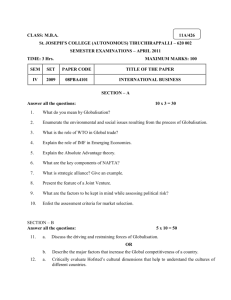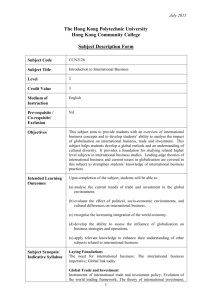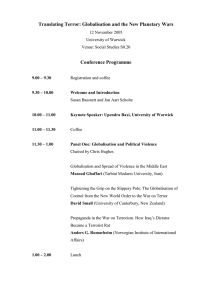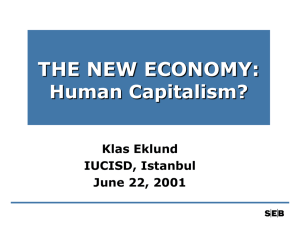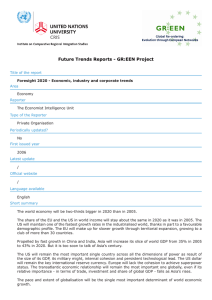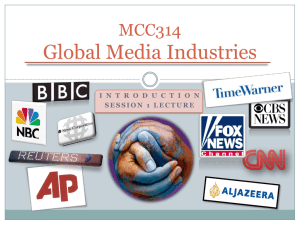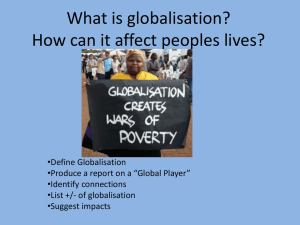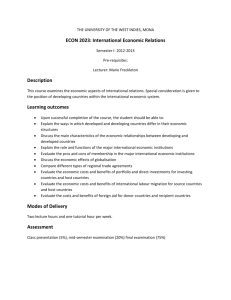INTERNATIONAL MARKETING EXAM NOTES Marketing and
advertisement
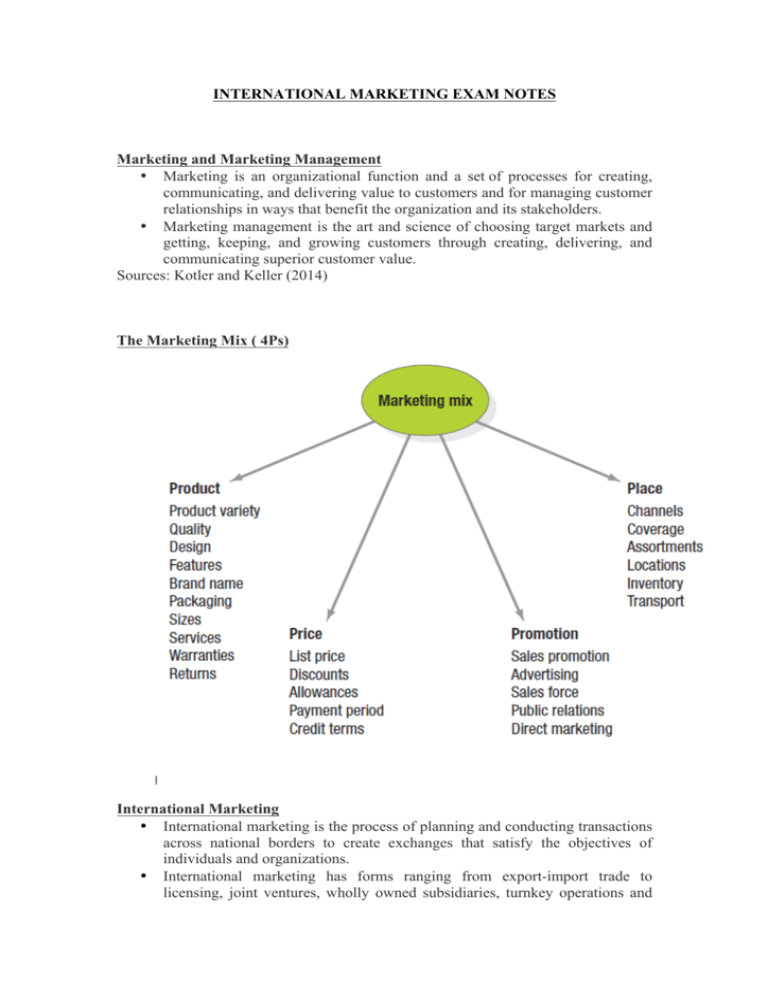
INTERNATIONAL MARKETING EXAM NOTES Marketing and Marketing Management • Marketing is an organizational function and a set of processes for creating, communicating, and delivering value to customers and for managing customer relationships in ways that benefit the organization and its stakeholders. • Marketing management is the art and science of choosing target markets and getting, keeping, and growing customers through creating, delivering, and communicating superior customer value. Sources: Kotler and Keller (2014) The Marketing Mix ( 4Ps) International Marketing • International marketing is the process of planning and conducting transactions across national borders to create exchanges that satisfy the objectives of individuals and organizations. • International marketing has forms ranging from export-import trade to licensing, joint ventures, wholly owned subsidiaries, turnkey operations and management contracts. (Source: Page 6 of Czinkota et al (2014) ) International Marketing: Introduction to International Marketing - Single Country Marketing vs. International Marketing • Single Country Marketing Strategy ! Target Market Strategy § Marketing Mix ! Product – Price – Promotion – Place • International Marketing Strategy ! Global Market Participation ! Marketing Mix Development ! 4 P’s: Adapt or Standardize? The Importance of Going Global • For U.S. companies, 75% of total world market for goods and services is outside the country • Coca-Cola earns 75% of operating income and 2/3 of profit outside of North America • For Japanese companies, 90% of world market is outside the country • 94% of market potential is outside of Germany for its companies even though it is the largest EU market How Big Is The Global Market? Globalisation drivers: Market factors • Growth in world trade outperformed growth of domestic economies, despite the 2008–2009 GFC • Firms made global investment, shifting locations of industries • Impact of new technology and developed infrastructures • Emergence of trading blocs • Convergence of consumer demand • Channels of distribution become more global Globalisation drivers: Cost factors • Avoiding cost inefficiencies and duplication of efforts • A single-country approach maybe not be large enough to achieve economies of scale and scope, and synergies • Size as a major asset, with many mergers and acquisitions in aerospace, pharmaceuticals, telecommunications Globalisation drivers: Environmental factors • Fallen government barriers •Rapid technological evolution • Emergence of new-generational global players: mini-nationals or ‘born globals’ (newer companies with sales between $200m and $1b) Globalisation drivers: Competitive factors • Leading companies drive globalisation process through their global network • Global marketers look for new markets and focus on best product categories for growth • Important to execute global strategies and prevent others from having undue advantage in unchallenged markets Challenges in international marketing • Awareness of global developments §Understanding diversified and changing consumer attitudes • Adaptation to market conditions • Anticipating the actions of global competitors • Developing new strategies involve ! Technological innovation ! Process improvements ! Creativity International Marketing: Introduction to International Marketing Opportunities in international marketing • Market needs • • • • ! Reaching more customers ! Consumers have more variety Avoiding market saturation Outperforming domestic counterparts Lowering insolvency risk Small to medium-sized enterprises (SMEs) are “born global” ! They achieve an almost immediate global presence, particularly in computer and telecommunication industries ! Smaller firms are considered major players ! 90 per cent of Australian firms have 50 or fewer employees Global marketing evolution International marketing questions • Should I obtain my supplies domestically or from abroad? • What marketing adjustments are or will be necessary? • What threats from global competition should I expect? • How can I work with these threats to turn them into opportunities? • What are my strategic global alternatives? Strategic planning process: Assessment and analysis - Understanding and adjusting the core strategy: • Clear definition and participation of executives from different functions - Market and competitive analysis: • Simultaneous focus on a broad range of markets, understanding of customers and structure of the global industry - Internal analysis: • Assessing internationalisation readiness Strategic planning process: Objective setting - Choice of competitive strategy: • cost leadership, differentiation, or focus - Country market choice: • evaluating internal strengths against market attractiveness - Segmentation: • Taking advantage of the benefits of standardisation for segments that span markets Bases for global segmentation Strategic planning process: Develop the global marketing program • Degree of standardisation in the product offerings • Marketing program beyond the product variable • Location and extent of value-adding activities
